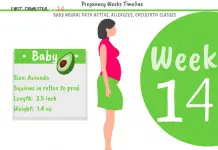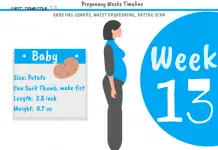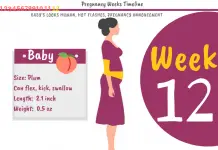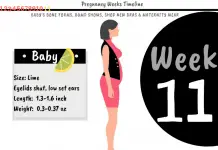A healthy baby will move, roll, stretch and kick often. There are patterns of sleep and activity that you can monitor using kick counts.
Some babies are active during day hours just like their mom. Others are night guards to keep momma awake and go star gazing. Whatever is the pattern you must keep a track of kick counts.
Your doula or gynecologist will tell you how to judge when labor will start using fetal kick counts. There have many reports where mothers who had stillbirths experienced a downfall in kick count.
A gradual reduction in fetal movement can be because of intrauterine growth restriction. About half of the women whose fetuses died inside uterus did admit experiencing less fetal movement.
However, even in case of a healthy pregnancy, the fetal movements reduce in the third trimester.
An increase in the size of fetus leaves less space for movement. Mothers can feel this fall in kick counts at 39 weeks.

When to start counting kicks?
You can feel baby kicking after the 18thbweek of pregnancy. A pregnancy kick counter monitors the baby’s movements. When you are 24 weeks pregnant you can monitor baby kicking using a monitor. You feel begin feeling baby’s kicks during the period between 18-20 week.
A first-time mother will feel the movements at 25 weeks. Second or third-time pregnancy has a shorter labor. You will feel the baby movements earlier.
If you are pregnant for the second time then expect to feel the pregnancy movements earlier. Once you feel the first kick of baby gets ready to feel a lot of it hereafter.
Sometimes the kick can send a lightning pain through the womb. Tumbling, rolling and stretching is most commonly felt baby movements. Your baby is enjoying his or her stay inside the safest place on earth!
How do baby’s kicks feel?
As a first time mother, you will wonder what baby movements feel like. Even when you get pregnant for the second or third time you may feel differently. Being pregnant with twins have a different pattern of movement.
Before 12th week you hardly feel anything. After the 18th week, you will feel some pattern in baby’s motion. The popular term quickening refers to the swift movements your baby does. Later after crossing the 24th week, you will start feeling a proper kick and counting will get easier.
How to do a kick count?
Kick counting is not difficult but requires patience and time. You will have to patiently keep counting kicks for two hours. A kick is not necessarily the football thrust but can be a swish or rolling movement.
Do not include the slightest fluttering because that can be your own bowel movements. The best time for baby kick count is after one or two hours from a meal. You can judge the right time by paying attention to when your baby is most active.
Kick counts include a set of ten movements felt within two hours. The first four movements are important. Most women feel these four movements within the first hour.
If there is a delay in the time of the first four movements for consecutive days something is wrong. Similarly, if you don’t feel the four movements within an hour you must tell your doctor.
Steps for pregnancy kick counts
- Have a snack or meal that makes you feel comfortable and gets your baby excited
- Lie down in a comfortable position or sit with your hands on your belly
- You can talk to your baby and do caressing touches to bond with your child. If your baby is not awake raise your legs and have a very cold drink. The drop in temperature will make the baby squish away and wake up. Don’t be too sudden in waking up your little one.
- Maintain a record where you write the daily kick count
- Start the process and note the time
- You have to feel about 10 movements whatever be the type in 2 hours or less
- When you feel a movement put a cross or tick so that you don’t forget the count
- Keep adding the symbols upon every movement
- After one hour passes put a slash or separator to mark the time lapse
- Finally when you feel all ten movements note the time of the last one
An example of a kick count chart is
9:00 PM ++++++++++9:56 PM
9:15 PM +++++++|+++10:15 PM
8:00 PM +++++++|++ 10:00 PM
9:00 PM ++++++++++ 9:45 PM
9:00 PM +++++++++++9:59 PM
8:05 PM ++|+|+10:05 PM – not normal
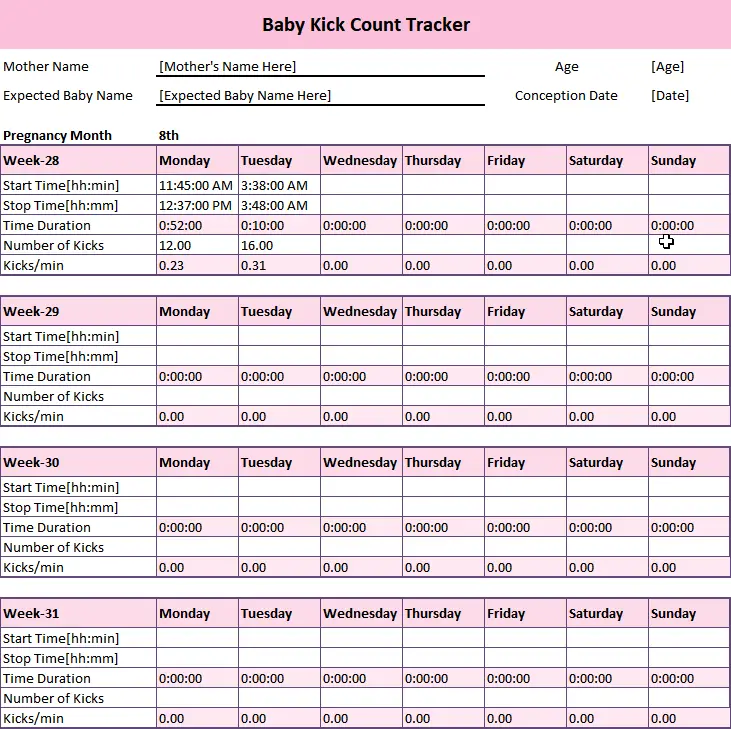
You must repeat after two hours and let your doctor know if you still do not get a satisfactory number of movements.
There can be deviations more than you expect every day. But you have to look for huge difference such as having only 3 movements in more than an hour.
You can bring some common parameter in the kick counts by starting at the exact time every day. Delay by a minute or two won’t be of much significance.
What is the best time for counting baby kicking?
When you first feel some movements you will not be able to make out the counts. It will take some time to accustom to the movements. Over time you will be able to understand the difference between gut movements and baby moving. With effort, you will also understand when the baby is awake and when sleepy.
Different movements like swirling, rolling or moving hands feel nearly the same. The best time to count kicks when pregnant is after having a meal. When your body gets nutrients the baby too takes them.
There is no rule that all babies will be awake at night or morning. That is an individual trait of every fetus. But you must count baby kicking at the same time every day to bring uniformity.
Which is the best position for kick counts?
A baby movement monitor can count the kicks in any position. But when you do it yourself lie down on your left side. The 18 weeks pregnant movements are not very stark. Kick counts is a must for high-risk pregnancies. The fetal health screening by counting kicks is something you can do every day with minimum effort. Active babies won’t demand your effort to attentively feel the movements. The baby movements will be rapid enough that you can feel them while reading a book. Lying down allows the abdomen area to feel free and expand. As you won’t feel the weight fetal kick counts will be easier to do.
Lying down on left side improves circulation. The baby movements get stronger when you eat something sweet because of rising in sugar. And so do the movements become random when your sugar levels fall late night. The midnight snacking has a scientific reason!
Why should you kick count?
Before anything else, daily kick count helps to assess your baby’s health. Along with that it also allows you to bond with your baby. And having your partner to count baby kicks will give him the real feel of becoming a father. Counting kicks after 28 weeks is going to benefit a lot. When you are 39-weeks or 40-weeks pregnant feeling no movement is a signal to head for labor.
What do when there is decreased fetal movement?
When you don’t feel 10 movements within 2 hours then you have to repeat the steps. If you continue to have a low number of movements, immediately inform your doctor. Even too many movements can be a sign that something is not right. It is common to feel less movement during the end of pregnancy. The baby grows up and cannot kick properly. They generally snuggle during their last days of sleep inside their world. But if you feel no movement at all you must inform your doula.
What can you do to make your baby kick?
The same things like making sounds or drinking a very cold drink can make the baby move. You can also indulge in a dessert as the rising sugar levels will get your baby active. Tips for kick counts are about tuning your baby’s movements. With practice, you can habituate your baby to move and become active by a particular activity you do. A specific kind of music or posture or even an exercise can make the baby kick and move.



![First Trimester Of Pregnancy: Weeks 1 To 13 First Trimester [Week 1- Week 13 Overview]](https://www.pregnanteve.com/wp-content/uploads/2019/07/first-trimester-of-pregnancy-218x150.jpg)
